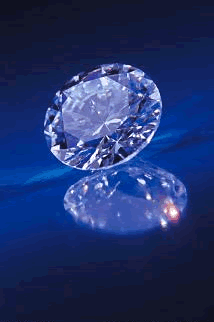Russia conquers the diamond market with striking export volumes
This information has been marked as secret since 1950s, when diamond deposits were found in the USSR
The website of the Russian Finance Ministry has exposed the national diamond statistics – the mining of diamonds, their import and export. Specialists are certain that the information will produce an international sensation in the economic world. As it turns out, Russia becomes the world's largest diamond country, leaving the traditional leader, Botswana, behind. 
Russia has to declassify the diamond statistics to be able to chair the Kimberley Process. The process was named so in honor of the town in the South African Republic, where the first conference on “rebellion” or “bloody” diamonds took place. On 1 January 2003 about 50 countries, including Russia, agreed to carry out the global control over the diamond sales.
Russia has exposed its diamond statistics for the first time. These data have always been marked as secret since the time, when diamonds deposits were discovered in the USSR in the middle of the 1950s. The Russian parliament decided to expose the information a bit more than a year ago; the deputies had to amend the law “About the State Secret” too.
The declassified information has changed the state of things on the global diamond market. Botswana has been considered the leader of the global diamond extraction. However, it turns out that Russia ranked first in the world on the diamond production volume in 2003 – 33 billion carats in comparison with Botswana's 29 billion carats. It is noteworthy that Botswana remained the leader as far as value terms are concerned. It can be explained with a higher cost of diamonds mined in the country: about $60 per carat vs. $51 per carat of Russian diamonds.
According to the Finance Ministry, Russia's diamond extraction increased quite considerably during the second half-year of 2003 – from 14.546 billion carats in the first six months to 18.473 billion carats in the second half-year (from $729 million to $947 million respectively).
The customs import and export statistics of the diamond raw material is rather interesting too. According to the Ministry for Economic Development and Trade Russia was the largest exporter of rough diamonds in 2003 among diamond-extracting states. In addition, Russia became the world's second biggest exporter of diamonds after the European Union. There are no diamond mines in Europe at all, although largest trade centers that sell diamonds are located in Europe.
Eighty-six percent of the Russian diamond export fell on Belgium and Great Britain in 2003 ($641.5 billion and $118.8 billion respectively). Israel is Russia's third largest buyer of diamonds: Russia exported 9.28 percent of its diamonds ($81.9 billion) to Israel in 2003.
The average price of Russia's exported diamonds makes up $22 per carat, which is twice as low as the average mining costs in the country. Finance Ministry experts say that Russia exports the raw material of lower quality. “The Russian manufacturing industry basically works with large raw material. We sell small diamonds as a rule, at low average prices,” a spokesperson for the ministry said.
Finance Ministry officials believe that Russia's chairmanship in the Kimberley Process was not the only reason, which made it declassify the diamond statistics: “We believe that it is pointless to classify the national diamond industry as secret. Diamonds are not the strategic raw material in Russia. It would be strange to make a secret of the customs statistics too. This information is available to everyone in the world, except for Russian mining and processing enterprises,” a source at the ministry said.
The Russian diamond monopoly, the company Alrosa, released the following statement: “We welcome the government's decision to declassify the diamond statistics, for it means that Russia abides by its obligations within the scope of the Kimberley Process. It also became possible to avoid sanctions against Russia and the company in particular.”
Subscribe to Pravda.Ru Telegram channel, Facebook, RSS!




